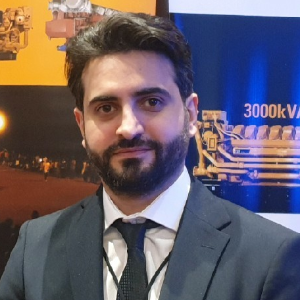Title : Modelling the deformation behavior of a hydraulically fractured reservoir rock under a monolayer arrangement of proppants
Abstract:
Hydraulic fracturing is a technique for increasing the productivity of low-permeability rocks like unconventional reservoirs. It makes extensive use of proppants to keep the fractures open. The placement of proppants within the fracture is determined by numerous characteristics such as the pad stage, slurry stage, and rock characteristics. Due to the limited fracture breadth, less proppant may be installed near to the fracture tip. As a result, only one layer of proppants may develop, either as a dense monolayer or a less dense partial monolayer. During drawdown, the interactions of rock and proppant can result in proppant embedment in ductile formations and proppant or rock crushing in brittle formations. Both scenarios result in a reduction of fracture conductivity, which has a direct influence on well performance.
A greater knowledge of the interaction between proppants and rocks can lead to more effective treatment plans. This interaction is examined in this section by developing an analytical model. To determine the fracture deformation pattern, this model employs contact mechanics theories for the sphere-plane interactions. This study took into account a variety of characteristics, including proppant size and layout. The findings were compared to an existing analytical model as well as a numerical model. According to the simulation results, utilizing nonuniform proppant sizes in a fractured rock can have a considerable influence on proppant crushing and embedment. Furthermore, for the situations studied in this work, a combination of proppant sizes can give improved fracture conductivity. The maximum compressive strength of the larger-sized proppants is an important factor in the design's efficiency.
Audience Take Away:
- The finding of this research can provide insight into the best proppant arrangement by taking into consideration the impacts of proppant and rock elastic modulus, proppant arrangement and size distribution, and rock/proppant crushing resistance.
- The outcomes suggest that utilizing nonuniform proppant sizes in a fractured rock can have considerable benefits on reducing proppant crushing and embedment.
- The results also shed light on the possibility of combining different proppant types, such as ceramics and uncoated sand, as means of improving the fracture conductivity and reducing the cost of the hydraulic fracture treatment.
- New analytical models are still needed to examine the deformation profile of fractured reservoir rocks when nonuniform proppant sizes are used or when other conditions are taken into consideration such as elastic-plastic and plastic deformations.



